Gaurav Banerjee on Star Plus’ strategy to fortify afternoon time band
Starting April 3, 2017, Star Plus is refreshing its afternoon strategy with the launch of ‘Star Plus Dopahar’ in the time slot of 12.30 pm to 2.30 pm. The afternoon time band will feature four new shows – ‘Tu Sooraj Mein Saanjh, Piyaji’, ‘Kya Kasoor Hai Amla Ka?’, ‘Ek Aastha Aisi Bhee’ and ‘Dhhai Kilo Prem’.
The myriad bouquet of content for this afternoon slot has been sourced from diverse content providers – Shashi & Sumeet Mittal, Sandip Sickand & Balaji Telefilms, Ved Raj, Dheeraj Sarna, Purnendu Shekhar, Nandita Mehra And Bhairavi Raichura.
Commenting on what makes afternoons the next strategic inroad, Narayan Sundararaman, General Manager, Star Plus, said, “We at Star Plus are constantly striving to reframe and reinvent Hindi entertainment television. Our goal is to make compelling content available to consumers across all parts of the day. There is a sizeable television viewing audience in the afternoon. Currently the only options available to these viewers are repeat telecasts. Our aim is to present viewers with a spectrum of original content, thereby growing the entire category. The insight that has fuelled the proposition is a simple one: afternoons are the only time of the day when the woman of the house has a few moments to herself. Today’s woman values her ‘Me-time’ and Star Plus is committed to engage her with original stories specially created for her.”
When asked about the key focus areas for Star Plus in 2017, Sundararaman replied, “It is to make sure that we remain the leading Hindi entertainment channel of choice for consumers and we will do that by telling the best stories on our channel. How we can maintain the leadership, expand the viewership and grow the category as market leaders – that’s what we are looking at.”
While introducing the unique programming line-up, Gaurav Banerjee, President & Head of Content Studio, Star India, said, “We believe that it is compelling stories which will draw viewers to the channel in the afternoon. We have seen this with several breakaway hits in the past, where we have changed viewership habits by offering cutting edge and differentiated content. Our endeavour is that the four shows with varied storylines and different backgrounds strike a chord with viewers, moving them emotionally so that they connect with the characters, thus truely being companions in their special ‘Me-time’.”
The immensely popular show, ‘Diya Aur Baati Hum’ by Shashi-Sumeet Productions, will return with a sequel – ‘Tu Sooraj Mein Saanjh, Piyaji’ – as part of Star Plus Dopahar.
Turkish show, ‘Fatmagul’ will be adapted in India as ‘Kya Kasoor Hai Amla Ka?’ Set in Dharamshala, the show is being remade with Indian sensibilities by Purnendu Shekhar, Nandita Mehra and Bhairavi Raichura (24 Frames).
‘Ek Aastha Aisi Bhee’ by Ved Raj and Dheeraj Sarna is the story of God’s special child, a girl who brings a fresh and unique perspective on faith.
Sandiip Sikcand is collaborating with Balaji TeleFilms for a love story, ‘Dhhai Kilo Prem’.
These four shows will bring the viewers powerful characters and entertaining stories that are aimed at increasing the viewership in the afternoon time band, making the channel a preferred destination among Indian women.
As the endeavour is to create a fresh viewing habit, the channel is making huge marketing investments to give Star Plus Dopahar a high decibel launch pad. Star India will be putting the might of the entire Star Network to announce the launch of the slot and the four new shows. Apart from the traditional mediums, the channel will look at meaningful partnerships with high engagement mediums for women across print, radio, and out of home.
Adgully caught up with Gaurav Banerjee to know more about the insight behind fortifying Star Plus’ afternoon time slot, consumption of Hindi entertainment content on television, the weekend strategy and more. Excerpts:
What is the insight behind relaunching the afternoon prime time slot?
We believe that these are compelling and good stories, and over a period of time they will garner viewership wherever we put them. That was our big learning when we expanded our evening prime time band as well. For the longest time, prime time started at 8 pm and ended at 11 pm. That’s what we looked to change and these shows will also help us with that.
Do we have the creative talent to support the growing need for new shows for the expanded prime time, especially scriptwriters/ storywriters?
Right now, we think that the answer is ‘Yes’ for us. However, I can’t answer on behalf of the whole industry. From Star Plus’ point of view, the first question for us was do we like these shows and we made pilots for each one of them. It was a secondary decision as to where to put so much of original content. But we were firm that we wanted to put these stories on Star Plus.
As this industry grows, there is hunger for more content. If we can put more stories out there, people can keep watching them and that is demonstrated by what has happened in South India and also in older TV markets like the US. So, we need to build capacity. The industry needs more writers, technicians, better actors to build capabilities and capacities, because the demand is there. And the demand is for well-made stories.
You have mentioned that you are here to increase the consumption of Hindi entertainment. What are the challenges that you see in that?
Basically, consumption can increase with more people watching for more number of minutes. And we believe there is room to grow both. If you look at the minutes being watched on Hindi entertainment and if I compare that with say, the Middle East, their consumption is better for stories or dramas. So, people watch more number of minutes and that is linked to better quality of storytelling. Therefore, as we look to improve the quality and increase variety, we will be able to persuade people to watch more. I think there is stretch which is possible in the number of shows that people are watching in a week and that number we can grow. I think television is set to expand in a very big way in our country, because TV penetration, especially in North India, which is in the mid-60 per cent, should grow to 100 per cent. Thus, there still is a large chunk of our country today – a large part of which is in rural India and also in urban India – that is not on television and that we need to get them on TV.
At Star, we don’t think about where exactly the consumption is happening – whether on TV or online. It doesn’t make a major difference as the advertisers will give us the required ROI wherever you watch by measuring it. Right now, our focus is on creating appointment in the afternoon in a big way.
Are you trying to get a newer set of audience to sample this content?
Yes, we are definitely trying to get the people who are watching TV to watch more and also those who are not watching TV. While we have come up with a sequel to ‘Diya Aur Baati Hum’, which has already been watched by the viewers, we also have the Indian adaptation of ‘Fatmagul’, which is a first of its kind. The intent behind doing a story like ‘Fatmagul’ is trying to get a newer set of audience. We are trying to do both things.
Over the years, exposure, demand and supply have increased. Earlier, 15 shows were made, now they have gone up to 75. Also, the digital world in which we are living today is a very real world. People are getting exposed to more stories through different ways. That is sort of changing the environment in a very big way. Thirdly, the issue of women’s empowerment is a very real issue in our society. Women believe that they need to be in far greater control of their destinies today. That’s a big change that we see every two years, a very big leap in the level of self confidence. All these change our perception of today’s day time viewers.
Our viewers are incredibly progressive, they love good storytelling with a good message. Why a show like ‘P.O.W.’ has not worked is a completely different question. We have learnt from it. It is the first time that we have an Israeli adaptation and it’s also a story which is set in a very different world around RAW and ISI. I think we should have introduced that world in a different and better manner. In the adaptation as well, we got some elements of the storytelling a little wrong. There are many issues from which we are learning. But that doesn’t mean that we will not experiment further. It is not that we are not going to fail tomorrow, we might. It is in the nature of our business that we fail often. But as long as we learn the right lessons from it, our overall business will be fine.
Could you shed some light on Star Plus’ weekend strategy?
We have just launched a romantic thriller, ‘Koi Laut Ke Aya’ this weekend. It is a finite series. We believe that it is a great opportunity to put out differentiated content. Whether it is ‘Dil Hai Hindustani’, which again is a new format – we brought along global talent, which is a first in India. ‘TED Talks’ should also come 6-8 months later, for which we are collaborating with Shah Rukh Khan after many years, so we are very excited.





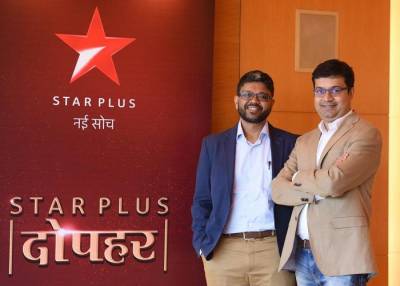
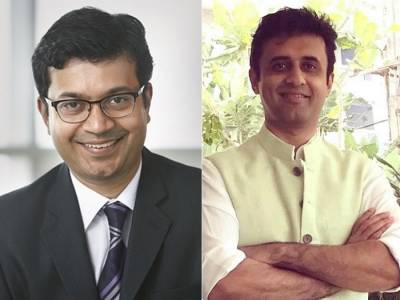


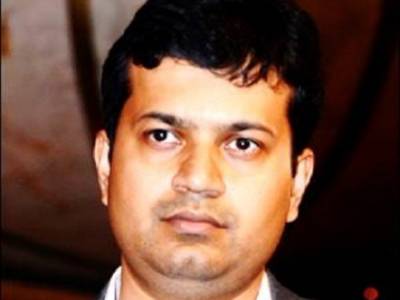
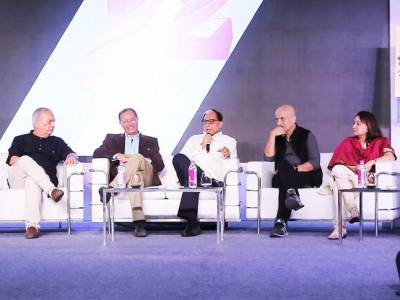

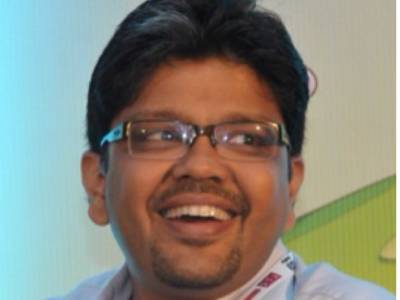


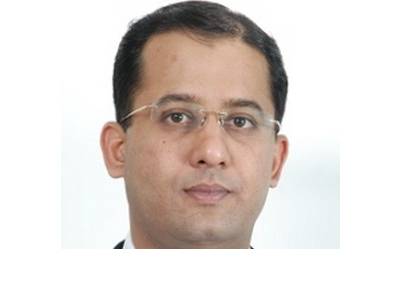

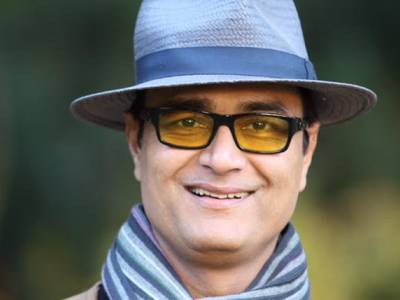



Share
Facebook
YouTube
Tweet
Twitter
LinkedIn